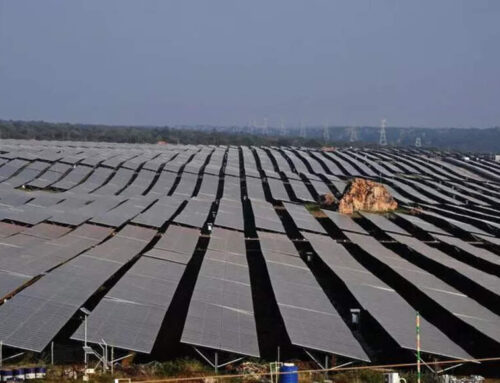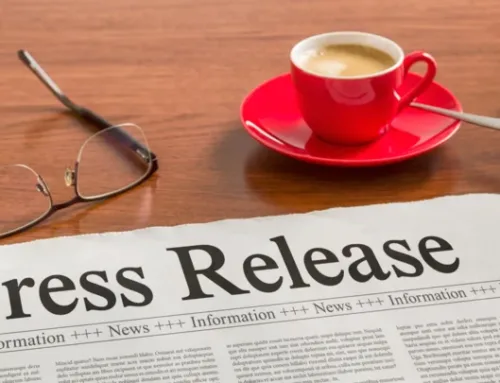Wildlife Management Gets Trickier as Climate Change Reconfigures Snowfall
March 31, 2025
Lincoln Parrett, a pilot and wildlife biologist at the Alaska Department of Fish and Game, typically spends 200 hours every year in a tiny plane, looking for moose, caribou, and wild sheep. From 600 feet up in the sky, it’s almost impractical work. Unless, of course, you’ve got the right conditions, he said. That’s where snow comes in. Against a fresh coating of bright-white fluff, a moose’s husky brown form pops against the Alaskan landscape, making Parrett’s job infinitely more feasible.
Parrett’s work guides state-wide wildlife management. Tracking, counting, and monitoring wildlife allows biologists to balance ecosystem preservation and human recreation. In the northern half of North America, this work can often hinge on snowpack, but climate change’s impact on diminishing wintry weather is jeopardizing the viability of many long-held research methods. In some cases, techniques such as aerial surveys are already beginning to falter, according to recent research in the Wildlife Society Bulletin.
“Snow conditions are becoming less reliable for these surveys, and it’s changing pretty fast,” said Todd Brinkman, a wildlife ecologist at the University of Alaska Fairbanks who coauthored the paper and has studied Alaskan wildlife for over a decade.
Snow is integral to the management and research of countless animals across the continent, including caribou, polar bears, pronghorn, and lynx. Scientists can pull environmental DNA from the snowy pawprints of predators, land managers follow the imprints of snow tracks to locate large herds, and the wintry chill that accompanies a frosty landscape can prevent animals captured for research from overheating.
When scientists need to capture pronghorn for blood samples or body fat readings in Wyoming, they hope for good weather—that is, a snowstorm. Pronghorn are the fastest land animals in North America, and it’s tricky to get ahold of them safely. Snow makes the job a bit easier.
“They can run up to nearly 60 miles per hour. When they fall, it’s like a car crash,” said Adele Reinking, a wildlife biologist and snow scientist at Colorado State University. As technicians—called “muggers”—perched in helicopters shoot out nets to ensnare pronghorn, the results can be catastrophic on solid ground. “They can break their backs. They can break their tails. But if you have snow on the ground, that can help cushion their fall,” she said.
Snow science
As climate change raises temperatures across the globe, it’s making the future of research that requires freezing temperatures increasingly precarious. “In October, if it’s 36 degrees, we’re not going to get snow,” said Parrett.
This degree of warmth is relatively new. In 1971, the northernmost region of Alaska was an average 6°F colder than it is today—a temperature difference that now can turn potential snow and snowpack into rain and ice. In some parts of the state, it now takes up to two weeks longer than it did in 2005 for snow depths to reach about six inches. And winter weather looks different in the Lower 48 too. The EPA is reporting less snowfall at most weather stations across the country, and the precipitation often arrives later in the fall and melts earlier in the spring than it used to.
While on the whole, winters are warmer with less snow, “it’s not always that way. It’s also more variable than it’s ever been before,” said Reinking. Cold fronts, winter storms, and blizzards are becoming more unpredictable and often more severe, a trend that scientists have also linked to human-caused climate change. Reinking said these events are especially evident in the Arctic.
“It’s warming faster than anywhere in the world, and people are seeing massive changes in winter snow and the shoulder seasons,” she added. Even cities just shy of the Arctic Circle are witnessing changes, she added, remembering how an unusual winter rain in 2021 created an icy crust near the central Alaskan city of Fairbanks. It was a massive problem for wildlife. “Moose were in everyone’s driveways because they were some of the only ice-free places. They were angry,” said Reinking, and “likely experiencing leg injuries.” The moose activity complicated things for humans too. “People couldn’t get outside to their cars to go to work.”
Moose management
In many regions of Alaska, where the impact of changing snow conditions is literally showing up on people’s doorsteps, some researchers don’t have a choice but to change their methods. Moose counting, for example, is getting tricky in some spots. Fall surveys must take place during a slim window of time: after snow has hit the ground but before daylight hours wane in mid-December.
Without accurate numbers, Alaska’s hunting mandates and conservation policy could be left in limbo: For example, yearly mandates on the length of the hunting season, bag limits, or quotas would become more of a guesstimate than a precise tool to manage moose.
“You don’t want too many [moose] because it could be bad for the habitat,” said Brinkman, nodding to moose’s role as ecosystem engineers. One moose can eat 40 to 60 pounds of twigs, grasses, and sedges each day. Multiply their appetites by the estimated population of 175,000 moose in Alaska and you might imagine the ecological dent an unchecked moose mania could cause on flora. On the contrary, if too many moose are harvested, it could take several years for the population to recover, added Brinkman. “You try to find a sweet spot,” he said.
The sweet spot enables “the hunt of a lifetime” for many outdoor enthusiasts, but it also helps Alaskan residents provide a healthy source of protein for their families. On the heftier end, a single moose could yield over 500 pounds of meat, enough to feed a small family for over a year.
As climate change continues to affect snowfall in North America, wildlife managers, including moose surveyors, will have to adapt, said Brinkman. The problem isn’t widespread across the continent just yet, but “in many parts of Alaska over the next 10 to 20 years, this approach isn’t going to be something that managers can rely on.”
The tricky part is finding a new path forward. The snow-based infrastructure to deploy planes, map routes, and tally wildlife took decades to perfect.
“There just aren’t great alternatives right now,” said Reinking. Plus, when data are collected one way for decades, changing course can lead to complications in data comparison. Areas like south-central and western Alaska have experienced such a decrease in snowfall that makeshift methods to count moose have already been deployed. Sometimes managers just have to estimate numbers in the fall or push surveying to the spring. The change of season makes it difficult to distinguish between female moose and their male counterparts that lose their antlers in early December. Finding a way to account for sex ratios is on the docket, but not much progress has been made.
“It takes a lot of development and research and work,” said Reinking. “And the hard part is that it takes time. [Finding new methods] is just not something that can happen overnight.”
Search
RECENT PRESS RELEASES
Related Post




